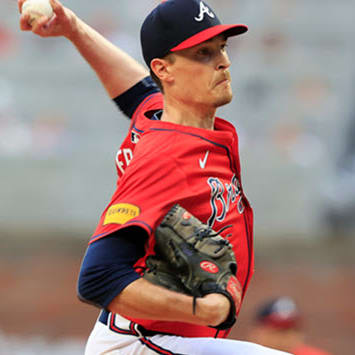This article is part of our MLB Barometer series.
We're approaching the 40-game mark, which means we're entering the part of the season where Todd Zola reminds us all what the phrase "quarter pole" means.
It's a funny time of year, where it's too late to say that it's still early, even though it's still in many ways quite early. Players' stat lines are mostly starting to fall in line with their expectations. The top of the wRC+ leaderboard features Shohei Ohtani, Mookie Betts, Marcell Ozuna and Juan Soto, for example, so it can't be that early. Of course, that quartet is followed by Ryan Jeffers, Tyler O'Neill and Jurickson Profar, so it must still be early.
One area where the season still looks particularly early is with pitcher ERAs, particularly for pitchers who have had one awful performance, as it takes a ton of good innings to outweigh an early blowup. Bailey Ober memorably gave up eight runs in 1.1 innings in his season debut; since then, he has a 2.55 ERA, but his ERA on the season is 4.42. George Kirby allowed eight runs in 3.2 innings in his second start of the year; his season ERA stands at 4.15, but without that one outing, it would be 2.72. It's even worse for relievers. Jose Alvarado has a 4.30 ERA on the year, but without his five-run blowup in his season debut, he'd be at 1.29.
To put it another way, we're deep enough in the season now that we really do
We're approaching the 40-game mark, which means we're entering the part of the season where Todd Zola reminds us all what the phrase "quarter pole" means.
It's a funny time of year, where it's too late to say that it's still early, even though it's still in many ways quite early. Players' stat lines are mostly starting to fall in line with their expectations. The top of the wRC+ leaderboard features Shohei Ohtani, Mookie Betts, Marcell Ozuna and Juan Soto, for example, so it can't be that early. Of course, that quartet is followed by Ryan Jeffers, Tyler O'Neill and Jurickson Profar, so it must still be early.
One area where the season still looks particularly early is with pitcher ERAs, particularly for pitchers who have had one awful performance, as it takes a ton of good innings to outweigh an early blowup. Bailey Ober memorably gave up eight runs in 1.1 innings in his season debut; since then, he has a 2.55 ERA, but his ERA on the season is 4.42. George Kirby allowed eight runs in 3.2 innings in his second start of the year; his season ERA stands at 4.15, but without that one outing, it would be 2.72. It's even worse for relievers. Jose Alvarado has a 4.30 ERA on the year, but without his five-run blowup in his season debut, he'd be at 1.29.
To put it another way, we're deep enough in the season now that we really do have some meaningful data to go on for plenty of players, but those numbers can still be misleading in many ways. Just as it's worth looking into the underlying numbers to try to see whether a player's results look sustainable, it's worth looking into the game log to determine whether his results are attributable to merely one bad game. For now, we'll move on to this week's set of risers and fallers, a group which starts with three pitchers showing excellent strikeout stuff so far.
RISERS
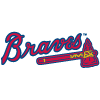 Chris Sale, SP, Atlanta: The biggest question mark for Sale over the past several seasons has been health, not performance, so there's a sense in which nothing he does over the first quarter of the season can truly reassure any doubters. Sale last reached 30 starts back in 2017 and averaged 7.8 starts over the last four seasons. But through seven starts this year, Sale not only looks healthy but looks like the best version of himself we've seen in years:
Chris Sale, SP, Atlanta: The biggest question mark for Sale over the past several seasons has been health, not performance, so there's a sense in which nothing he does over the first quarter of the season can truly reassure any doubters. Sale last reached 30 starts back in 2017 and averaged 7.8 starts over the last four seasons. But through seven starts this year, Sale not only looks healthy but looks like the best version of himself we've seen in years:
Year(s) | ERA | WHIP | SIERA | K% | BB% | GB% | FB Velo |
|---|---|---|---|---|---|---|---|
2010-2019 | 3.03 | 1.03 | 2.81 | 30.7% | 5.7% | 43.1% | 94.6 mph |
2021-2023 | 3.93 | 1.19 | 3.50 | 28.8% | 6.6% | 40.8% | 94.1 mph |
2024 | 2.95 | 0.98 | 2.59 | 30.6% | 4.7% | 49.5% | 95.1 mph |
As that middle row indicates, Sale remained quite a good pitcher even while battling through multiple different ailments in the wake of his 2020 Tommy John surgery, but it's undeniable that his 2024 numbers bear more resemblance to the pre-surgery model. That last column backs up that notion, as Sale is throwing a full tick harder than he did over the past three seasons. Sale's continued health of course can't be relied upon given his age (35) and his recent track record, but he sure looks healthy at the moment. Workload will eventually become a concern, though Atlanta could have more competition for the division than expected thanks to Spencer Strider's elbow surgery, Ronald Acuna's (possibly injury-related) underperformance and the Phillies' hot start, so plans to give Sale a "phantom IL" stint to preserve his arm for October could be put on hold.
 Dylan Cease, SP, Padres: The mid-March trade which sent Cease from the White Sox to the Padres undoubtedly improved his fantasy appeal, as it gave him a better shot at wins and a park upgrade. But even with the change of scenery, he was still a pitcher who's been in the bottom five in walk rate among qualified starters in each of the last three seasons — even the 2022 campaign in which he had a 2.22 ERA and finished second in AL Cy Young voting. If you avoided him (like I did) even after the trade due to those control issues and the high WHIP and general unreliability they tend to bring, you've missed out on an excellent start to the year. Through eight starts, Cease has career bests nearly everywhere it matters: ERA (2.19), WHIP (0.75), strikeout rate (32.4 percent) and walk rate (8.6 percent), as well as most ERA estimators, including SIERA (3.03). Outside of an April 27 start against the Phillies in which he allowed five runs, he hasn't allowed more than two earned runs in any of his starts. If Cease can hold a walk rate in this range, he could be in line for Cy Young votes again this year, though it's worth noting that he has a ball rate of 38.5 percent, the same mark he has over the course of his six-year career. The bad version of Dylan Cease could return at any moment, but so far, doubting him looks like the wrong move.
Dylan Cease, SP, Padres: The mid-March trade which sent Cease from the White Sox to the Padres undoubtedly improved his fantasy appeal, as it gave him a better shot at wins and a park upgrade. But even with the change of scenery, he was still a pitcher who's been in the bottom five in walk rate among qualified starters in each of the last three seasons — even the 2022 campaign in which he had a 2.22 ERA and finished second in AL Cy Young voting. If you avoided him (like I did) even after the trade due to those control issues and the high WHIP and general unreliability they tend to bring, you've missed out on an excellent start to the year. Through eight starts, Cease has career bests nearly everywhere it matters: ERA (2.19), WHIP (0.75), strikeout rate (32.4 percent) and walk rate (8.6 percent), as well as most ERA estimators, including SIERA (3.03). Outside of an April 27 start against the Phillies in which he allowed five runs, he hasn't allowed more than two earned runs in any of his starts. If Cease can hold a walk rate in this range, he could be in line for Cy Young votes again this year, though it's worth noting that he has a ball rate of 38.5 percent, the same mark he has over the course of his six-year career. The bad version of Dylan Cease could return at any moment, but so far, doubting him looks like the wrong move.
 Nick Lodolo, SP, Reds: Lodolo may not have been great in his last start, giving up four runs in five innings against the Orioles, but a minor blip can be forgiven against one of the league's best lineups. Even in that outing, he had a perfectly fine 6:2 K:BB, meaning he now has a 32.2 percent strikeout rate and 7.0 percent walk rate to back up his 2.79 ERA through five starts. He's not yet technically a qualified starter, as he didn't make his season debut until mid-April as he finished his recovery from the fractured tibia which cut his 2023 season short after seven starts, but if you lower the threshold to 25 innings, he sits among excellent company. The only other pitchers with a strikeout rate of 32.0 percent or better and a walk rate of 7.0 percent or better in at least 25 innings are Garrett Crochet, Jack Flaherty, Tyler Glasnow, Sonny Gray, Jared Jones, Tarik Skubal and Zack Wheeler. In many ways, this run is nothing new for Lodolo, who carried a 29.3 percent strikeout rate and 8.1 percent walk rate for his career into this season. That lead to a good SIERA (3.33), but it came with a 4.31 ERA, in large part due to an elevated HR/9 of 1.50. Pitching in Cincinnati is going to lead to some homer problems, but Lodolo does have an above-average groundball rate (45.8 percent) for his career, which should help offset them somewhat.
Nick Lodolo, SP, Reds: Lodolo may not have been great in his last start, giving up four runs in five innings against the Orioles, but a minor blip can be forgiven against one of the league's best lineups. Even in that outing, he had a perfectly fine 6:2 K:BB, meaning he now has a 32.2 percent strikeout rate and 7.0 percent walk rate to back up his 2.79 ERA through five starts. He's not yet technically a qualified starter, as he didn't make his season debut until mid-April as he finished his recovery from the fractured tibia which cut his 2023 season short after seven starts, but if you lower the threshold to 25 innings, he sits among excellent company. The only other pitchers with a strikeout rate of 32.0 percent or better and a walk rate of 7.0 percent or better in at least 25 innings are Garrett Crochet, Jack Flaherty, Tyler Glasnow, Sonny Gray, Jared Jones, Tarik Skubal and Zack Wheeler. In many ways, this run is nothing new for Lodolo, who carried a 29.3 percent strikeout rate and 8.1 percent walk rate for his career into this season. That lead to a good SIERA (3.33), but it came with a 4.31 ERA, in large part due to an elevated HR/9 of 1.50. Pitching in Cincinnati is going to lead to some homer problems, but Lodolo does have an above-average groundball rate (45.8 percent) for his career, which should help offset them somewhat.
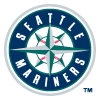 Josh Rojas, 2B/3B, Mariners: For most of his career, Rojas has been somewhere between a low-end regular and a high-end bench player. In parts of five seasons, the 29-year-old hit .253/.329/.369 (good for a 93 wRC+) with an average of 10 homers and 18 steals per 600 plate appearances. This year, though, he's settled into the large side of a platoon in Seattle and has taken steps forward in multiple areas at once, leading to a .348/.420/.539 slash line (178 wRC+) in 101 trips to the plate to go along with a trio of homers and a trio of steals. A .412 BABIP certainly has something to do with his elevated slash line, but it's hard to find an underlying metric where Rojas hasn't improved this year:
Josh Rojas, 2B/3B, Mariners: For most of his career, Rojas has been somewhere between a low-end regular and a high-end bench player. In parts of five seasons, the 29-year-old hit .253/.329/.369 (good for a 93 wRC+) with an average of 10 homers and 18 steals per 600 plate appearances. This year, though, he's settled into the large side of a platoon in Seattle and has taken steps forward in multiple areas at once, leading to a .348/.420/.539 slash line (178 wRC+) in 101 trips to the plate to go along with a trio of homers and a trio of steals. A .412 BABIP certainly has something to do with his elevated slash line, but it's hard to find an underlying metric where Rojas hasn't improved this year:
Year(s) | PA | BB% | K% | Barrel% | HardHit% | Flyball% | O-Swing% | Contact% |
|---|---|---|---|---|---|---|---|---|
2019-2023 | 1,637 | 10.1% | 22.8% | 4.2% | 32.9% | 32.7% | 25.3% | 78.3% |
2024 | 101 | 10.9% | 17.8% | 6.9% | 38.9% | 39.4% | 21.8% | 82.1% |
What more could you want? Rojas is chasing less and making contact more often, and that contact is more frequently hard and in the air. That's not to say that Rojas is suddenly a proper power hitter, but if he's showing much closer to league-average power while also putting the ball in play more often, that's a significant development. Toss in Rojas' eligibility at both corner and middle infield and he suddenly looks like quite a useful fantasy option.
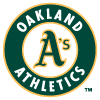 Shea Langeliers, C, Athletics: Langeliers is far from a complete player. He's hitting just .209 with a .260 on-base percentage, right in line with his career .209 average and .265 OBP. But after his five-hit, two-homer, eight-RBI performance in Wednesday's doubleheader against the Rangers, he deserves a deeper look. Langeliers' nine homers tie Cal Raleigh for the lead among all catchers, while his 24 RBI rank sixth at the position. Langeliers' contact quality is incredible right now, as his 18.9 percent barrel rate trails only Shohei Ohtani among qualified hitters. That's not entirely new, however, as Langeliers has always shown plenty of power, producing an excellent 13.3 percent barrel rate last season. But heading into this year, he struck out in 30.5 percent of his plate appearances and made contact on 66.9 percent of his swings. This season, he's cut his strikeout rate to 22.0 percent while improving his contact rate to 7.5 percent. Scouting reports did put a future 50 on Langeliers' hit tool as a prospect, indicating that his strikeout concerns weren't supposed to be permanent. If Langeliers can hold onto most of his gains in both contact and power this year (something which shouldn't be impossible for a highly-touted prospect in his second full season), he'll end the campaign as a much more interesting catcher than he was thought to be this past winter, when he was merely the 22nd backstop off the board in NFBC drafts.
Shea Langeliers, C, Athletics: Langeliers is far from a complete player. He's hitting just .209 with a .260 on-base percentage, right in line with his career .209 average and .265 OBP. But after his five-hit, two-homer, eight-RBI performance in Wednesday's doubleheader against the Rangers, he deserves a deeper look. Langeliers' nine homers tie Cal Raleigh for the lead among all catchers, while his 24 RBI rank sixth at the position. Langeliers' contact quality is incredible right now, as his 18.9 percent barrel rate trails only Shohei Ohtani among qualified hitters. That's not entirely new, however, as Langeliers has always shown plenty of power, producing an excellent 13.3 percent barrel rate last season. But heading into this year, he struck out in 30.5 percent of his plate appearances and made contact on 66.9 percent of his swings. This season, he's cut his strikeout rate to 22.0 percent while improving his contact rate to 7.5 percent. Scouting reports did put a future 50 on Langeliers' hit tool as a prospect, indicating that his strikeout concerns weren't supposed to be permanent. If Langeliers can hold onto most of his gains in both contact and power this year (something which shouldn't be impossible for a highly-touted prospect in his second full season), he'll end the campaign as a much more interesting catcher than he was thought to be this past winter, when he was merely the 22nd backstop off the board in NFBC drafts.
 Vidal Brujan, 2B, Marlins: Brujan may be the biggest winner of the Luis Arraez trade, though he'd actually seen an uptick in playing time prior to the deal due to Jake Burger's oblique injury. He started five of the last seven games before Arraez was dealt and has now made six straight starts since the trade, so it's fair to treat him as an everyday player at this point. That's pretty impressive for a 26-year-old who owned a .157/.218/.221 career slash line in 99 MLB games prior to this season. Of course, the player Brujan was in sporadic playing time in Tampa wasn't the player Brujan was supposed to be, as he was a consensus top-100 prospect whose excellent speed earned him a rank as high as 11th on our fantasy-focused rankings here at RotoWire. As a prospect, Brujan's contact-and-speed profile made him look like a future leadoff man, but he never showed enough in his brief auditions with the Rays to earn an extended look. A lack of alternatives for the 10-29 Marlins means Brujan is finally getting that extended run, and it's paying off in one key way: his strikeout rate, which sat at 24.3 percent over his first three seasons, is just 8.5 percent through 71 plate appearances this year. He's still showing next to no power (zero homers and a 1.7 percent barrel rate), but his .266/.338/.391 slash line (103 wRC+) is an encouraging start and should give him chances to start running more frequently, as he's just 2-of-4 on the basepaths thus far.
Vidal Brujan, 2B, Marlins: Brujan may be the biggest winner of the Luis Arraez trade, though he'd actually seen an uptick in playing time prior to the deal due to Jake Burger's oblique injury. He started five of the last seven games before Arraez was dealt and has now made six straight starts since the trade, so it's fair to treat him as an everyday player at this point. That's pretty impressive for a 26-year-old who owned a .157/.218/.221 career slash line in 99 MLB games prior to this season. Of course, the player Brujan was in sporadic playing time in Tampa wasn't the player Brujan was supposed to be, as he was a consensus top-100 prospect whose excellent speed earned him a rank as high as 11th on our fantasy-focused rankings here at RotoWire. As a prospect, Brujan's contact-and-speed profile made him look like a future leadoff man, but he never showed enough in his brief auditions with the Rays to earn an extended look. A lack of alternatives for the 10-29 Marlins means Brujan is finally getting that extended run, and it's paying off in one key way: his strikeout rate, which sat at 24.3 percent over his first three seasons, is just 8.5 percent through 71 plate appearances this year. He's still showing next to no power (zero homers and a 1.7 percent barrel rate), but his .266/.338/.391 slash line (103 wRC+) is an encouraging start and should give him chances to start running more frequently, as he's just 2-of-4 on the basepaths thus far.
FALLERS
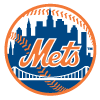 Pete Alonso, 1B, Mets: It hasn't all gone wrong for Alonso this season, as his nine homers tie him for seventh in the league. But a .212 /.297/.445 slash line is well below expectations for someone who was a second-round pick in 15-team fantasy leagues and who doesn't provide any speed. Drafters who selected Alonso that early likely assumed he could get back to being the guy who hit .262 in 2021 and .271 in 2022, but he instead looks more like the guy who hit .217 last year. The good news here is that Alonso's strikeout rate hasn't moved, as his 20.6 percent mark is a near match for his 20.5 percent strikeout rate over the last three seasons. The issue seems to be that Alonso is hitting too many flyballs. In his first four seasons, Alonso's flyball rate between 41.5 percent and 43.9 percent, marks which would have ranked between 20th and 38th among qualified hitters last season. Last year, he jumped up to 47.7 percent, the eighth-highest mark in the league, and this year he's up even more to 48.6 percent. Six qualified hitters (Jack Suwinski, Anthony Santander, Kyle Schwarber, Matt Chapman, Max Muncy and Cal Raleigh) finished with a flyball rate at least that high last season, and while they all had plenty of pop, they averaged just .227 as a group. All those flyballs should help Alonso maintain his place near the top of the home run leaderboard, but his batting average problem is here to stay.
Pete Alonso, 1B, Mets: It hasn't all gone wrong for Alonso this season, as his nine homers tie him for seventh in the league. But a .212 /.297/.445 slash line is well below expectations for someone who was a second-round pick in 15-team fantasy leagues and who doesn't provide any speed. Drafters who selected Alonso that early likely assumed he could get back to being the guy who hit .262 in 2021 and .271 in 2022, but he instead looks more like the guy who hit .217 last year. The good news here is that Alonso's strikeout rate hasn't moved, as his 20.6 percent mark is a near match for his 20.5 percent strikeout rate over the last three seasons. The issue seems to be that Alonso is hitting too many flyballs. In his first four seasons, Alonso's flyball rate between 41.5 percent and 43.9 percent, marks which would have ranked between 20th and 38th among qualified hitters last season. Last year, he jumped up to 47.7 percent, the eighth-highest mark in the league, and this year he's up even more to 48.6 percent. Six qualified hitters (Jack Suwinski, Anthony Santander, Kyle Schwarber, Matt Chapman, Max Muncy and Cal Raleigh) finished with a flyball rate at least that high last season, and while they all had plenty of pop, they averaged just .227 as a group. All those flyballs should help Alonso maintain his place near the top of the home run leaderboard, but his batting average problem is here to stay.
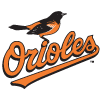 Craig Kimbrel, RP, Orioles: Did Baltimore really think this was going to go any other way? Kimbrel may be a future Hall of Famer, but that rests on the work he did early in his career. He averaged 41.5 saves from 2011 to 2018, but since then, he hasn't even reached 25 in a year. He's been good enough for part of the year to record at least 20 saves in each of the last three seasons, but he's made a habit of pitching his way out of the ninth inning. He may not have officially lost his closer job with the Orioles just yet, with manager Brandon Hyde saying that the team needs to stick with him and "get him right," but it's clear to see which direction the situation is trending. Kimbrel has allowed at least one run in five of his last six appearances and has an awful 5:8 K:BB over that stretch. He's blown a pair of saves and was also pulled in the middle of a save attempt with Baltimore still in the lead, with Yennier Cano shutting the door on that occasion. Danny Coulombe and Jacob Webb have also picked up saves since Kimbrel's slump began, so it's possible the Orioles continue to spread the opportunities around rather than handing the ninth inning over to Cano until Kimbrel gets himself right. Kimbrel does at least still have swing-and-miss stuff, as his 35.6 percent strikeout rate indicates, but his 15.3 percent walk rate is tough to stomach in a high-leverage spot.
Craig Kimbrel, RP, Orioles: Did Baltimore really think this was going to go any other way? Kimbrel may be a future Hall of Famer, but that rests on the work he did early in his career. He averaged 41.5 saves from 2011 to 2018, but since then, he hasn't even reached 25 in a year. He's been good enough for part of the year to record at least 20 saves in each of the last three seasons, but he's made a habit of pitching his way out of the ninth inning. He may not have officially lost his closer job with the Orioles just yet, with manager Brandon Hyde saying that the team needs to stick with him and "get him right," but it's clear to see which direction the situation is trending. Kimbrel has allowed at least one run in five of his last six appearances and has an awful 5:8 K:BB over that stretch. He's blown a pair of saves and was also pulled in the middle of a save attempt with Baltimore still in the lead, with Yennier Cano shutting the door on that occasion. Danny Coulombe and Jacob Webb have also picked up saves since Kimbrel's slump began, so it's possible the Orioles continue to spread the opportunities around rather than handing the ninth inning over to Cano until Kimbrel gets himself right. Kimbrel does at least still have swing-and-miss stuff, as his 35.6 percent strikeout rate indicates, but his 15.3 percent walk rate is tough to stomach in a high-leverage spot.
 Colton Cowser, OF, Orioles: It's been an adventure of a season for Cowser. He was no lock to make Baltimore's Opening Day roster, and while a strong spring did earn him that opportunity, he initially was stuck in a bench role, starting just twice across the first three series. He was then given a shot in the starting lineup and homered twice against the Red Sox and twice more in the following series against the Brewers, catapulting him back onto the fantasy radar. Since the end of the Milwaukee series, however, Cowser has been stuck in a deep slump. He's homered twice in 69 plate appearances while slashing just .183/.275/.333 and striking out 39.1 percent of the time. His inclusion as a faller this week (less than a month after he featured as a riser) is not to say that his early hot streak was a fluke and that he's going to continue to hit below the Mendoza line, but rather a reminder that he's still a young player with some development left to do, particularly around his shaky hit tool. For now, Cowser continues to play nearly everyday, but if the slump continues, the Orioles could take advantage of their depth and cycle him back to Triple-A for a few weeks to sort things out. At the very least, if you thought that Cowser's Fenway series was a sign that he'd emerged as a fully-formed star player, it's probably best to recalibrate and think of him as a talented young slugger whose significant swing-and-miss issues could lead to more stretches like this one.
Colton Cowser, OF, Orioles: It's been an adventure of a season for Cowser. He was no lock to make Baltimore's Opening Day roster, and while a strong spring did earn him that opportunity, he initially was stuck in a bench role, starting just twice across the first three series. He was then given a shot in the starting lineup and homered twice against the Red Sox and twice more in the following series against the Brewers, catapulting him back onto the fantasy radar. Since the end of the Milwaukee series, however, Cowser has been stuck in a deep slump. He's homered twice in 69 plate appearances while slashing just .183/.275/.333 and striking out 39.1 percent of the time. His inclusion as a faller this week (less than a month after he featured as a riser) is not to say that his early hot streak was a fluke and that he's going to continue to hit below the Mendoza line, but rather a reminder that he's still a young player with some development left to do, particularly around his shaky hit tool. For now, Cowser continues to play nearly everyday, but if the slump continues, the Orioles could take advantage of their depth and cycle him back to Triple-A for a few weeks to sort things out. At the very least, if you thought that Cowser's Fenway series was a sign that he'd emerged as a fully-formed star player, it's probably best to recalibrate and think of him as a talented young slugger whose significant swing-and-miss issues could lead to more stretches like this one.
 Will Benson, OF, Reds: Benson seemed like one of the clear winners when the Reds suddenly had their playing-time crunch ease up this spring due to Noelvi Marte's suspension and injuries to Matt McLain and TJ Friedl. The absences allowed Benson to move up to second in the order against righties and also meant he got to remain in the lineup against lefties rather than filling a platoon role. In theory, everything was lined up for Benson to build on his strong performance in a part-time role last season (when he hit .275/.365/.498 line with 11 homers and 19 steals in 329 trips to the plate) and become a household name. Instead, Benson has fallen flat on his face. He does have a respectable four homers and seven steals in 129 plate appearances (putting him on pace for 10 and 18 if he matches last year's playing time), but he's hitting just .190/.271/.388. There's nothing wrong with his quality of contact, as evidenced by his 49.2 percent hard hit rate, but he's not making nearly enough of it, striking out 41.1 percent of the time. That's the highest mark among qualified hitters by a long shot, with Oneil Cruz coming in second at 34.7 percent. Major hit-tool risk was part of Benson's game as a prospect, and his strong batting average last season hid a 31.3 percent strikeout rate and a .230 xBA, so this might not be an issue that fixes itself any time soon.
Will Benson, OF, Reds: Benson seemed like one of the clear winners when the Reds suddenly had their playing-time crunch ease up this spring due to Noelvi Marte's suspension and injuries to Matt McLain and TJ Friedl. The absences allowed Benson to move up to second in the order against righties and also meant he got to remain in the lineup against lefties rather than filling a platoon role. In theory, everything was lined up for Benson to build on his strong performance in a part-time role last season (when he hit .275/.365/.498 line with 11 homers and 19 steals in 329 trips to the plate) and become a household name. Instead, Benson has fallen flat on his face. He does have a respectable four homers and seven steals in 129 plate appearances (putting him on pace for 10 and 18 if he matches last year's playing time), but he's hitting just .190/.271/.388. There's nothing wrong with his quality of contact, as evidenced by his 49.2 percent hard hit rate, but he's not making nearly enough of it, striking out 41.1 percent of the time. That's the highest mark among qualified hitters by a long shot, with Oneil Cruz coming in second at 34.7 percent. Major hit-tool risk was part of Benson's game as a prospect, and his strong batting average last season hid a 31.3 percent strikeout rate and a .230 xBA, so this might not be an issue that fixes itself any time soon.







